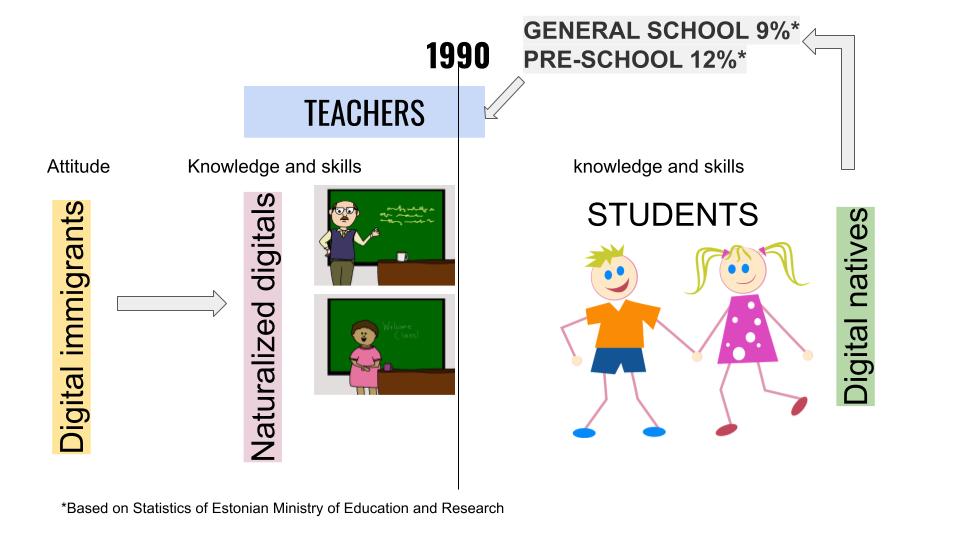Our students adapt to new technology very fast, at the same time, schools, teaching practices and teacher training progress at a slower pace. That creates a big gap between the students and their education (digital natives vs. digital immigrants). Most of the teachers are digital immigrants but students are digital natives (see figure). Thus, the aim is to help them to become naturalized digitals.

Estonian example (Mäeots, 2020).

The digital immigrant prefers more traditional ways for sending mail.
There is also the third group of people who are described as “Naturalized digitals”. These people belong by the age into the same group as digital immigrants but they act similarly as digital natives (Lutz, Hoffmann, & Meckel, 2014).
In addition, the students’ mere use of technology needs to be guided towards a more meaningful acquisition of digital skills and competences (as they are put down e.g. in the European digital framework). The challenges schools face today is the expanding gap between teachers (and their teaching practices) and students’ in using digital technology.
How to understand digital pedagogy?
It should not be technology but instead pedagogy that drives how students develop and learn. It is a teachers’ decision about what pedagogies he or she follows. The teachers create their own digital pedagogy through their professionalism, teaching skills and readiness to adapt gradually to the digital world into their classroom. If a teacher creates his or her own digital pedagogy, it is more likely that the teacher will be a more confident and equal partner to students in dealing with the digital world.